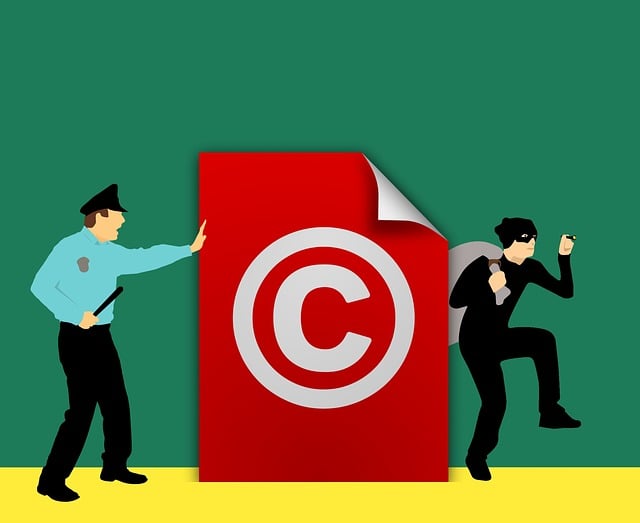A domain name is more than just a web address; it’s digital identity. The process of domain registration can seem complex, especially for beginners. We will demystify every facet of domain registration, providing a step-by-step walkthrough for those embarking on the journey of establishing their digital identity.
1. Understanding the Basics: What is a Domain?
A domain is like a nickname for websites, making them easy to find on the internet. Instead of using complicated numbers, computers use these nicknames to locate websites. For example, in www.wikipedia.org, “wikipedia” is the special name, and “.org” shows it’s an organization. Also, consider Google’s domain name, www.google.com, as the friendly face of its underlying numerical IP address. The name you pick for your website matters, like choosing www.technews.com if you want to talk about technology news.
2. Choosing the Right Domain Name
Selecting the perfect domain name is like picking a special name for online store. It’s important because it helps to remember and find your website easily. Imagine your domain name as the sign on your digital front door. For instance, if you love sharing tech news, a good domain could be something like www.TechNewsHub.com.
When choosing, think about your brand and what you want visitors to remember. Make it simple, unique, and relevant. Avoid using complicated words or symbols. For example, if your website is about healthy recipes, a great domain could be www.HealthyStore.com. Another example, If your website is about travel adventures, a catchy domain might be www.ExploreJoy.com.
3. Checking Domain Availability
Checking if your chosen domain name is available is like ensuring your favorite book title hasn’t been taken by someone else. Your domain is kind of first step to start online journey, and you want it to be unique, just like your favorite book. To see if your chosen name is available, we can use websites like Namecheap or GoDaddy.
For example, let’s say we want domain name www.AdventureBook.com for our travel blog. Simply type it into the search bar on these websites, and they’ll let us know if it’s available or not. If it’s already taken, don’t worry! Get creative and try other variations, like www.WanderlustTales.com.

4. Selecting the Right Domain Extension (TLD)
Domain extensions, or top-level domains (TLDs), are the suffixes in a domain name, such as .com, .org, or .net. Each TLD has its significance. Consider the example of www.wikipedia.org. The .org TLD indicates that Wikipedia is an organization. Choose a TLD that aligns with your website’s purpose. Newer options like .tech or .online offer creative alternatives. Here are few examples of TLD.
| TLD | Usage | Example |
|---|---|---|
| .com | Commercial or business websites | www.example.com |
| .org | Organizations, often non-profit | www.wikipedia.org |
| .net | Originally for networks, now general use | www.technews.net |
| .edu | Educational institutions | www.harvard.edu |
| .gov | Government websites | www.whitehouse.gov |
| .mil | U.S. military websites | www.army.mil |
| .co | Originally for Colombian websites, now used globally | www.techstartup.co |
| .io | British Indian Ocean Territory, popular for tech and startups | www.appname.io |
| .me | Montenegro, often used for personal websites | www.johndoe.me |
| .info | Intended for informational websites | www.travelinfo.info |
5. Choosing a Reliable Domain Registrar
Your journey into the digital realm begins with selecting a reliable domain registrar. Platforms like Namecheap, Bluehost, and GoDaddy are popular choices. Evaluate registrars based on criteria such as pricing, customer support, and additional features. Look for user-friendly interfaces to streamline the registration process.
6. Registering Your Domain: Step-by-Step Process
Now, let’s delve into the practical side of domain registration. Using a platform like Namecheap, follow this step-by-step guide:
- Visit the Registrar’s Website: Go to the website of your chosen registrar.
- Search for Your Domain: Use the search bar to check the availability of your desired domain.
- Select Your Domain: Once available, add it to your cart.
- Review Your Order: Ensure you’ve selected the correct domain and review additional services like domain privacy.
- Create an Account: If you’re a new user, create an account on the registrar’s platform.
- Complete the Purchase: Enter your payment details and complete the purchase.
Explore additional options like domain privacy, email hosting, and SSL certificates during the registration process.
7. Understanding Domain Ownership and Management
Owning a domain comes with responsibilities. After registering, navigate to the registrar’s domain management interface. Keep registration information up-to-date, including your contact details. Regularly check your email associated with the domain for important notifications. For instance, GoDaddy’s Domain Management provides a user-friendly interface.
8. Privacy Protection and Domain Security
Privacy is paramount in the digital realm. Privacy protection services shield personal information associated with domain registration. Popular registrars like Namecheap offer domain privacy options during the registration process. Additionally, implement two-factor authentication for enhanced domain security.
9. Renewing Your Domain: Ensuring Continuity
Continuity is key in the online world. This section highlights the significance of renewing domain registrations. Most registrars offer automatic renewal options. Configure this feature to ensure the uninterrupted presence of your digital address. Platforms like Bluehost provide user-friendly interfaces for managing renewal settings.
10. Transferring Domains: A Comprehensive Guide
As your digital venture evolves, you may consider transferring domains between registrars. Follow these steps:
- Unlock Your Domain: Log in to your current registrar’s account and unlock your domain.
- Retrieve Authorization Code: Obtain the authorization code (EPP code) from your current registrar.
- Initiate Transfer with New Registrar: Visit your new registrar’s website and initiate the domain transfer process.
- Enter Authorization Code: During the process, enter the authorization code.
- Confirm Transfer: Confirm the transfer when prompted.
- Wait for Confirmation: Wait for confirmation emails from both registrars.
Popular registrars like Namecheap offer detailed guides on domain transfers.
Conclusion
Armed with this comprehensive guide, you’re now well-equipped to navigate the intricate process of domain registration. Demystify each step, and embark on your domain registration journey with confidence, ensuring the establishment of a successful and well-defined digital identity. May your digital presence flourish as you navigate the exciting world of domain registration.

